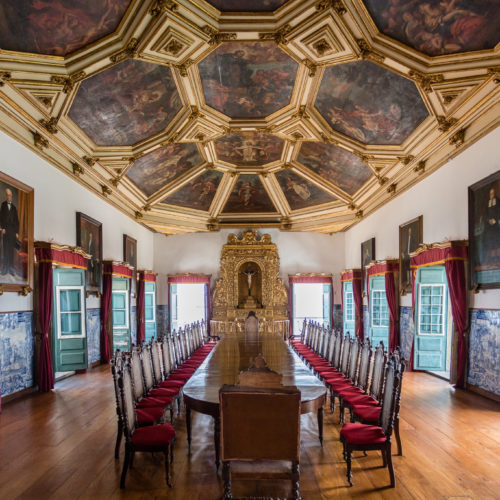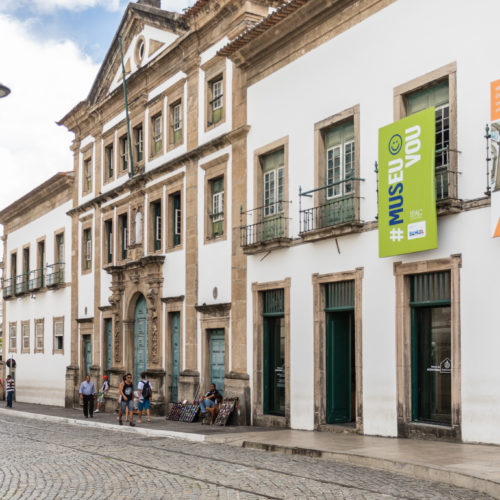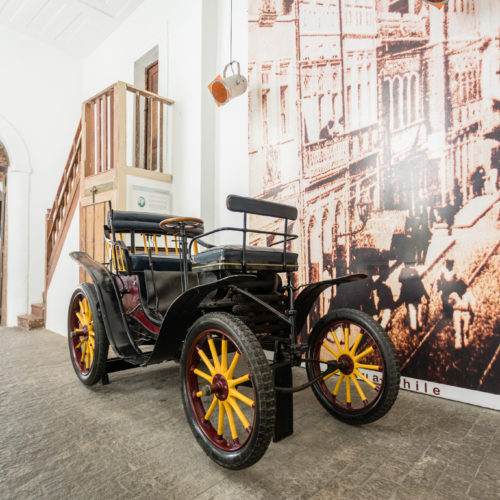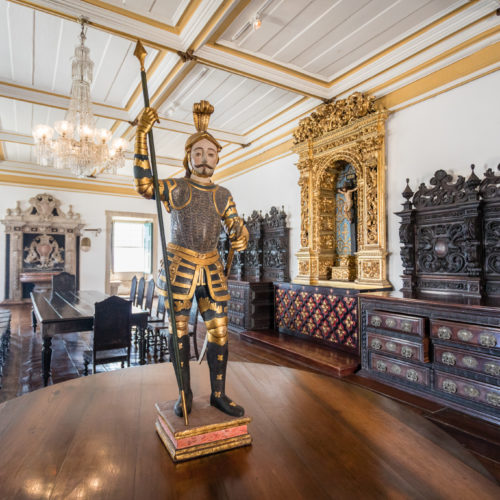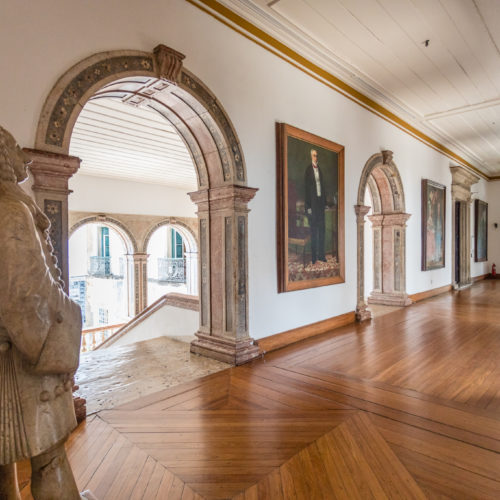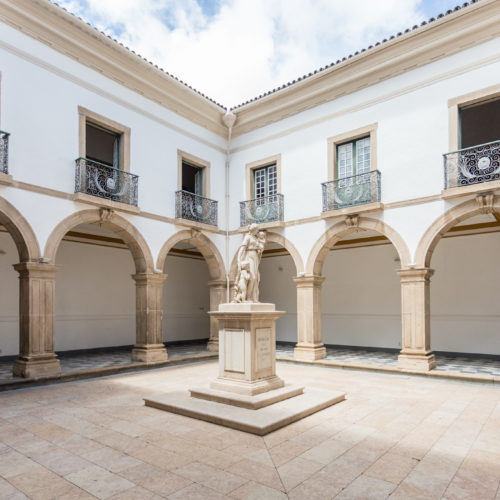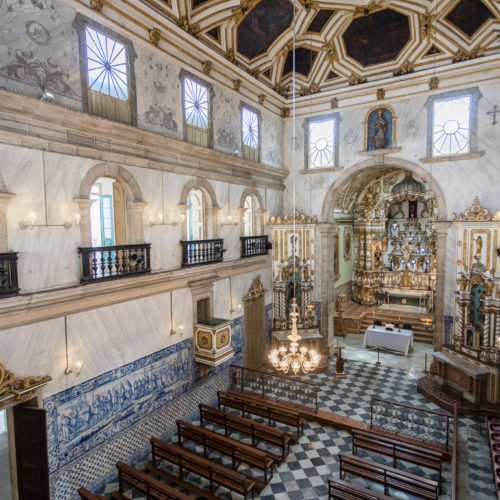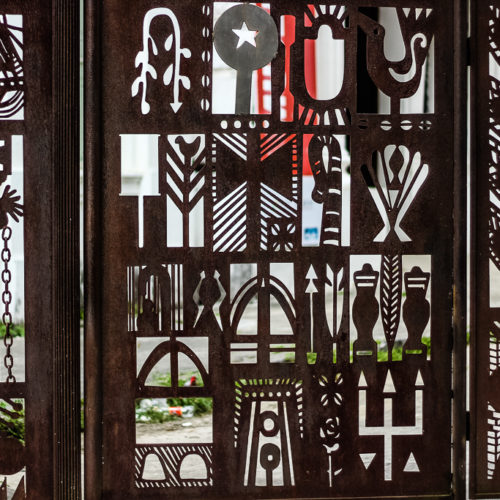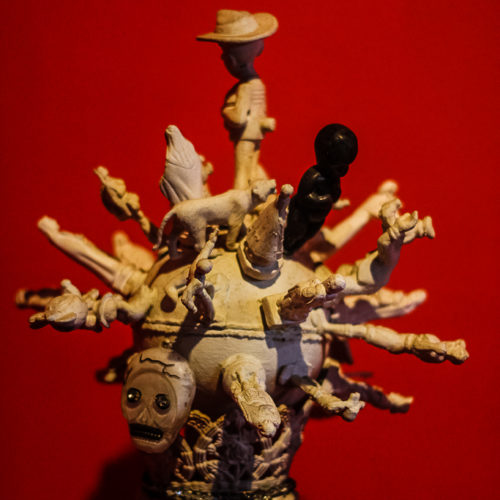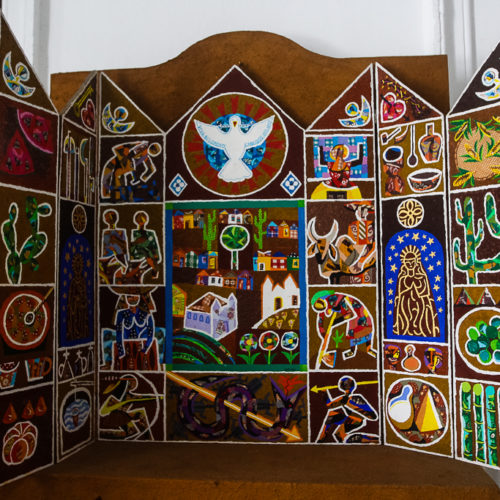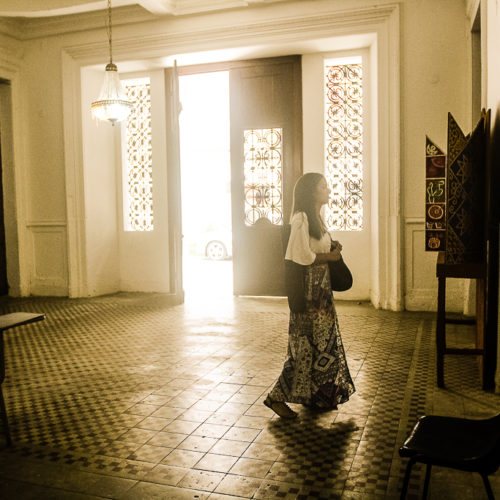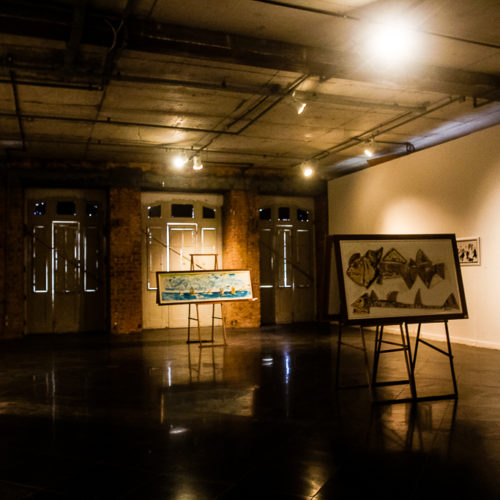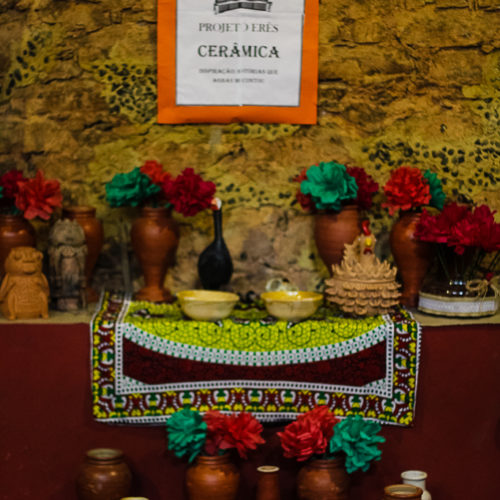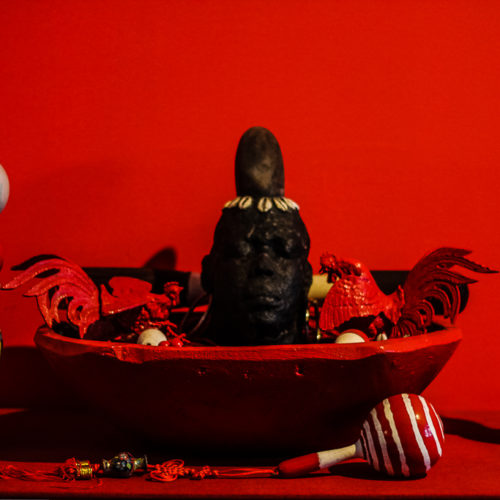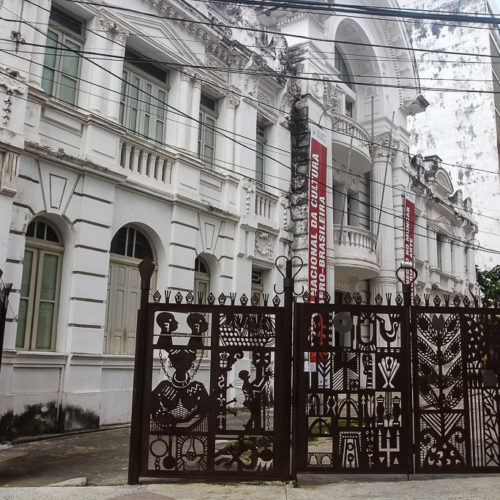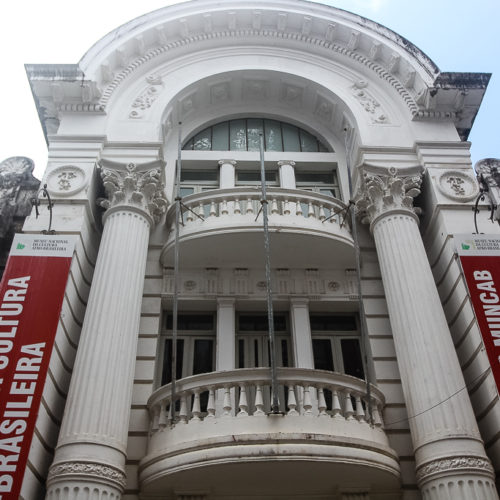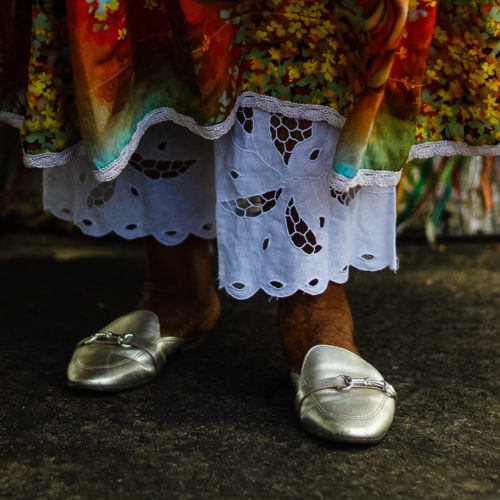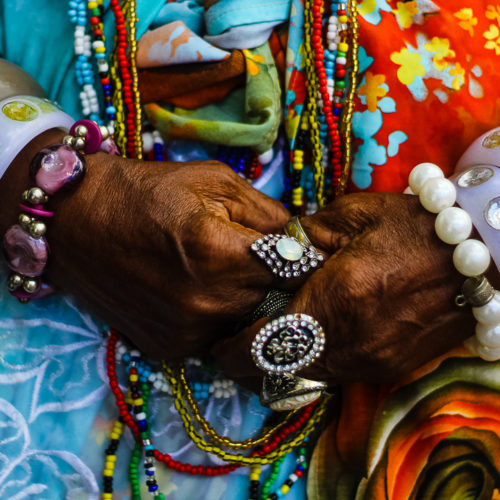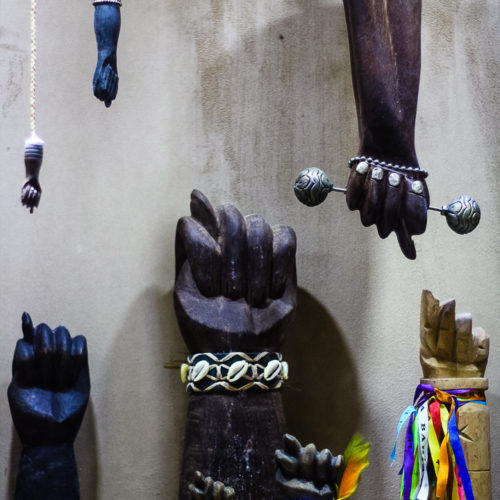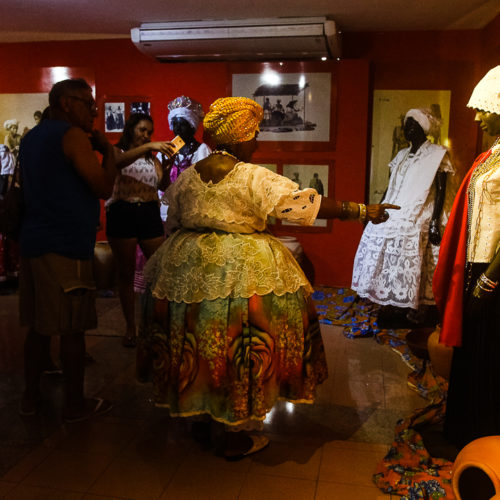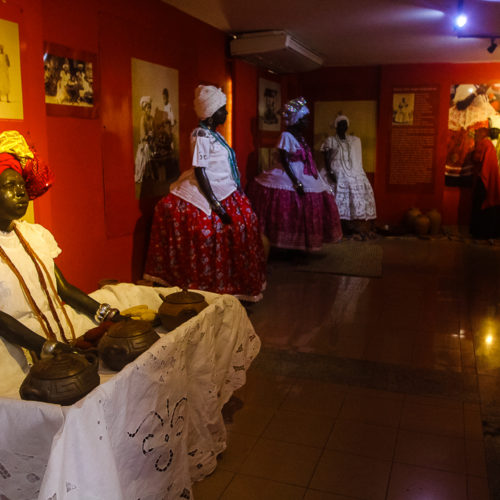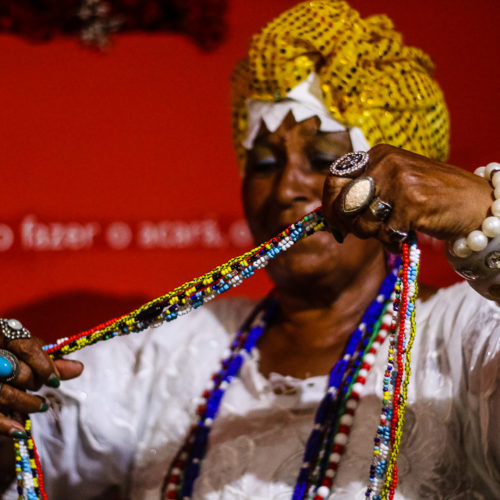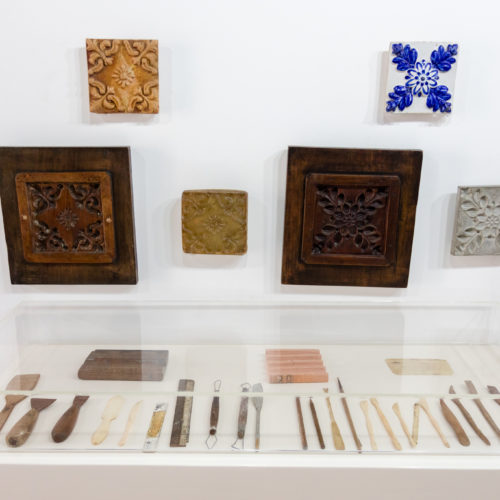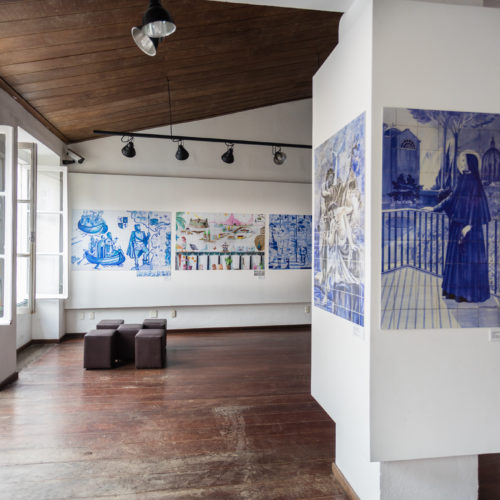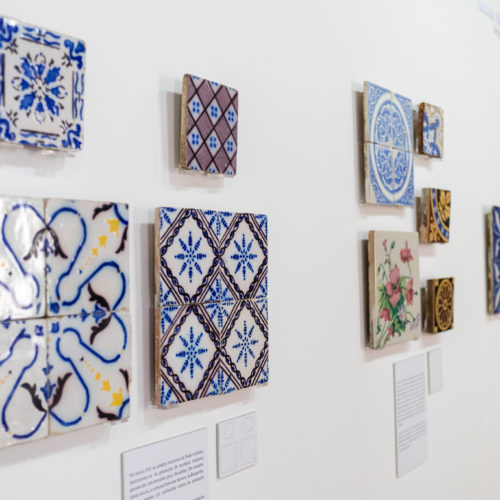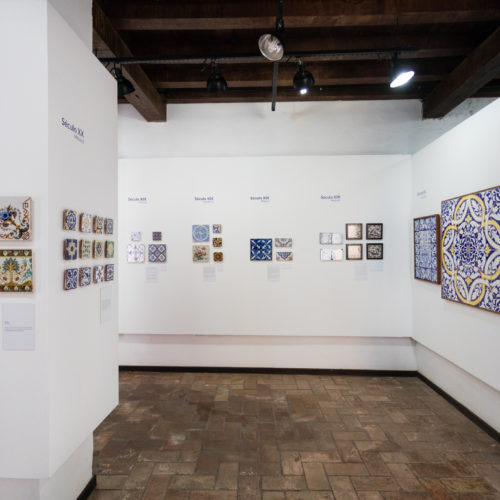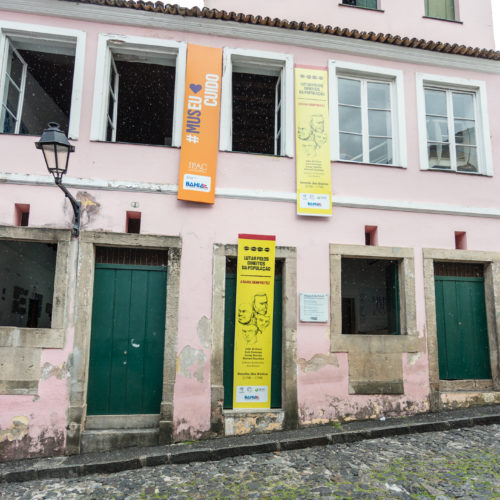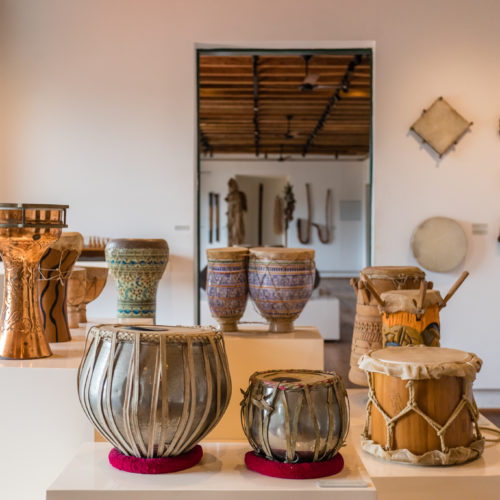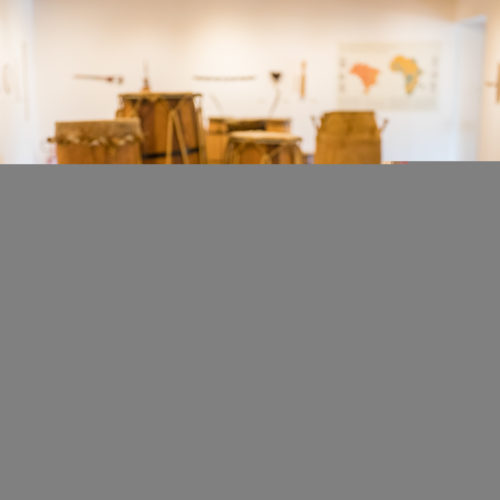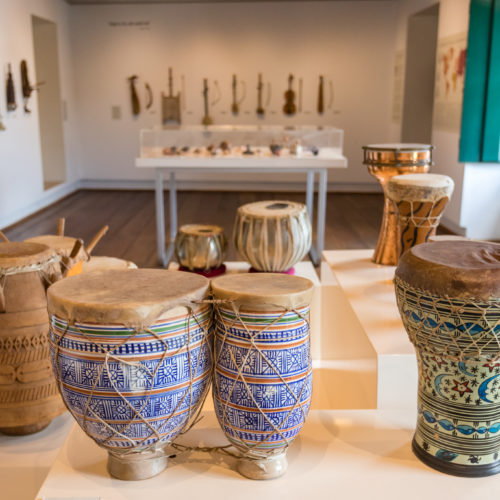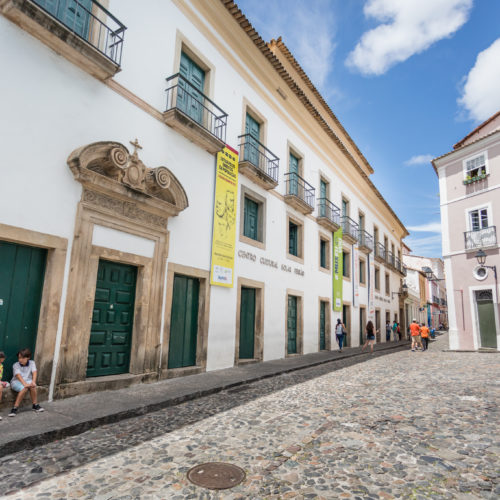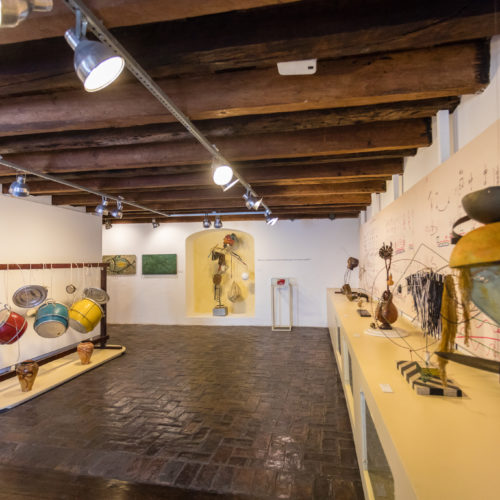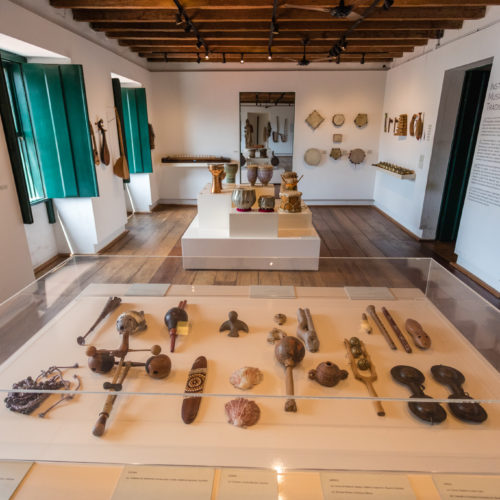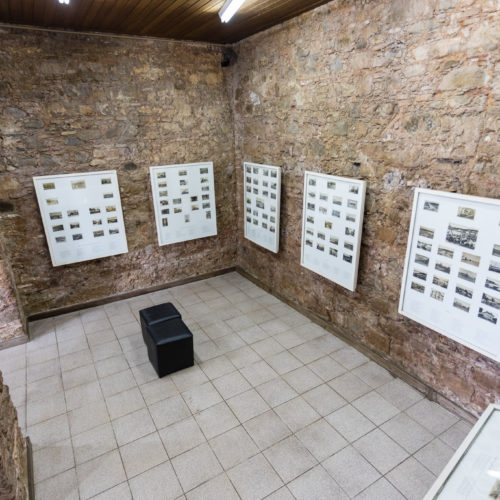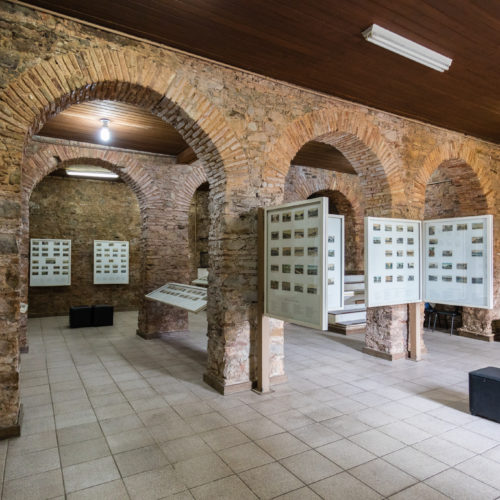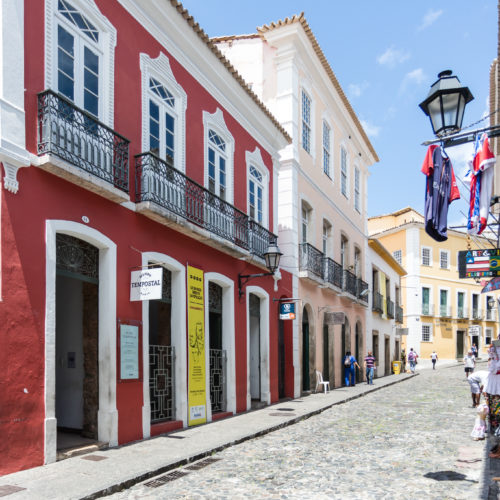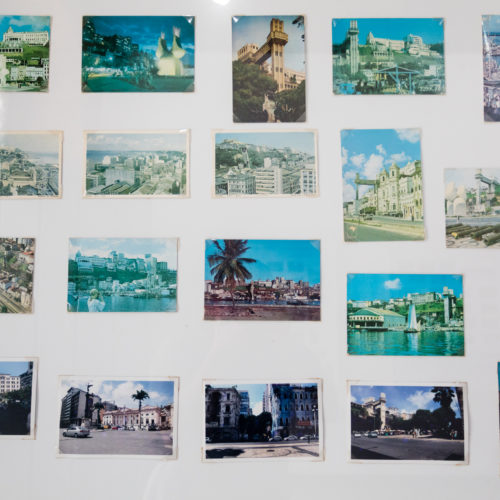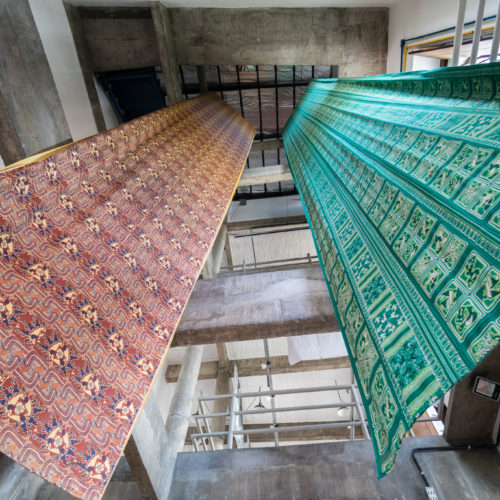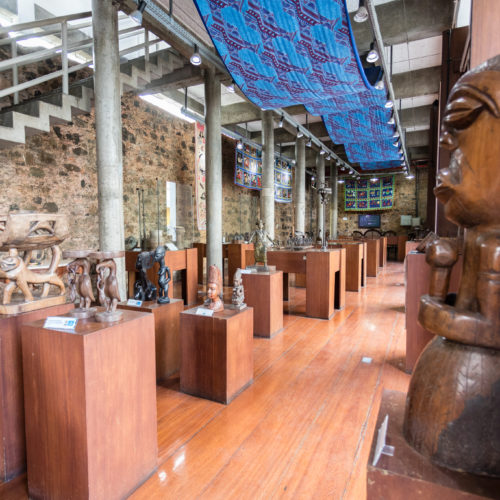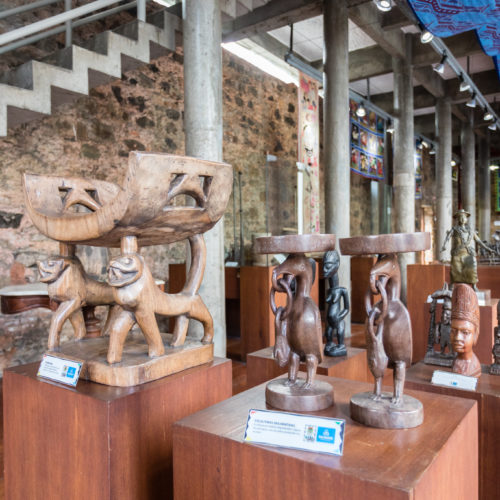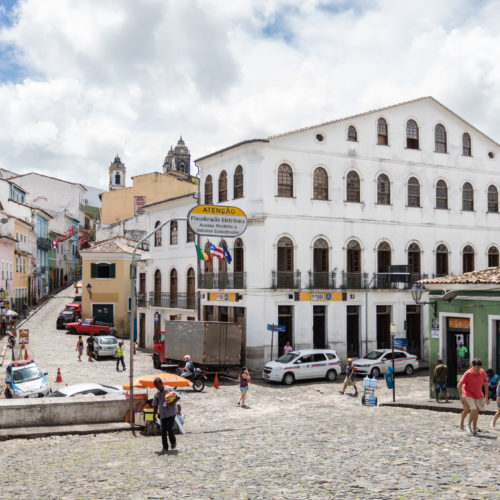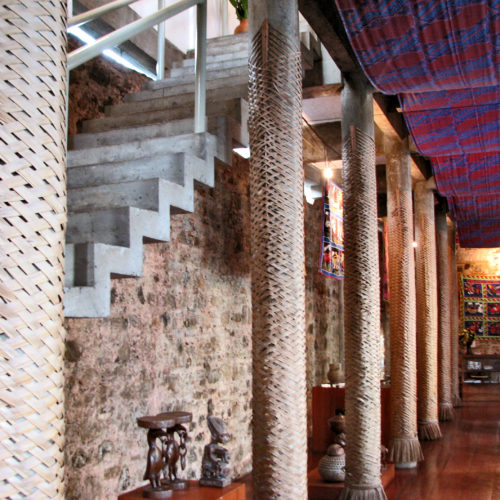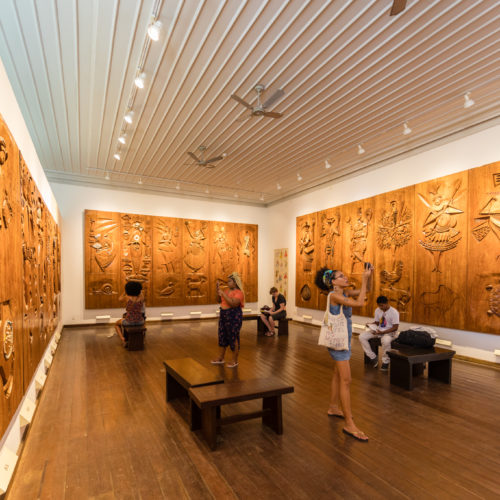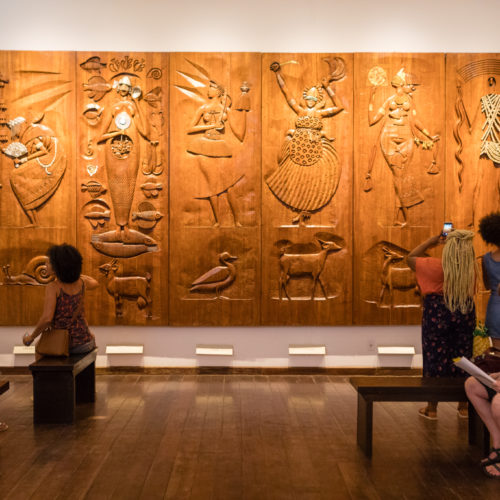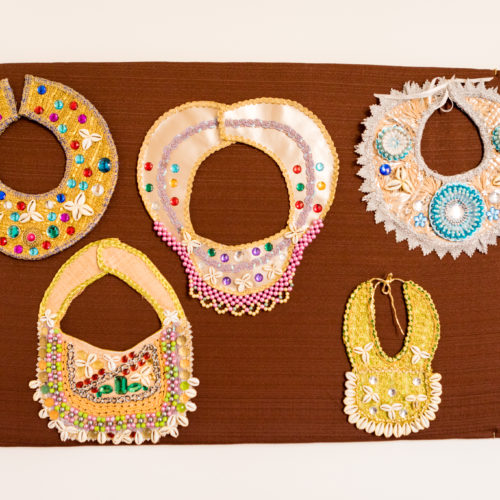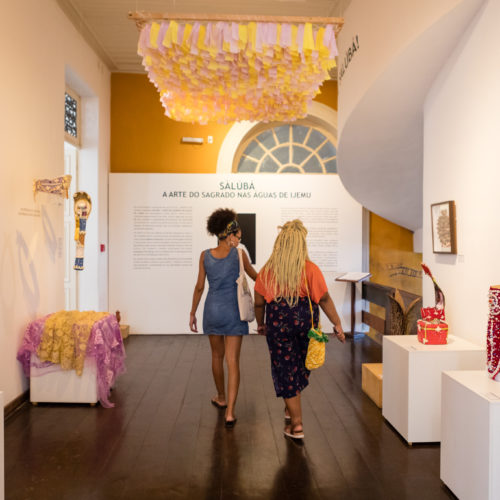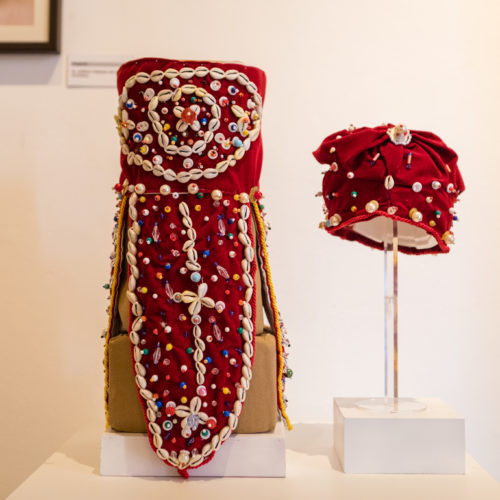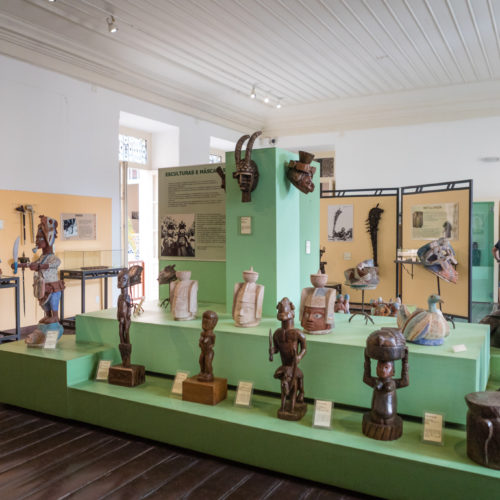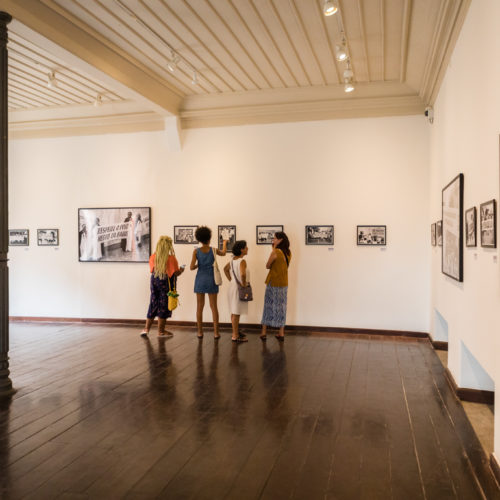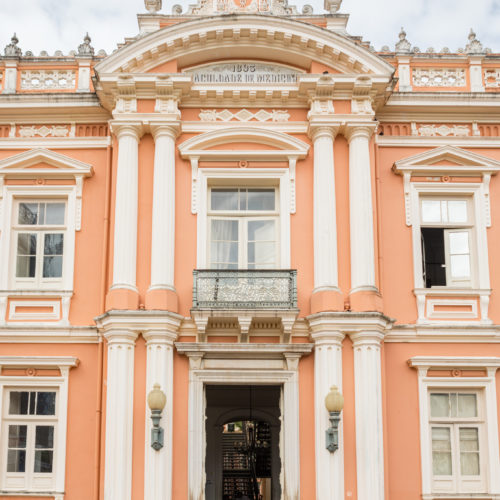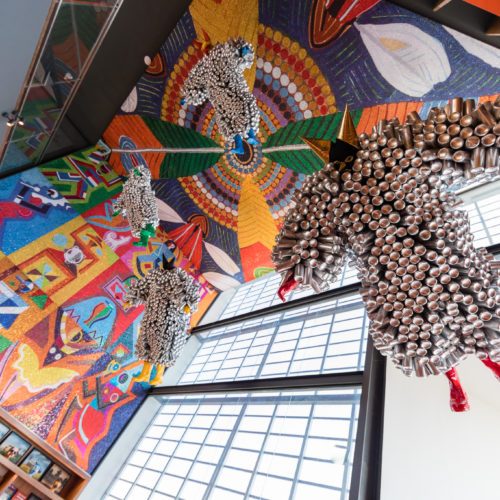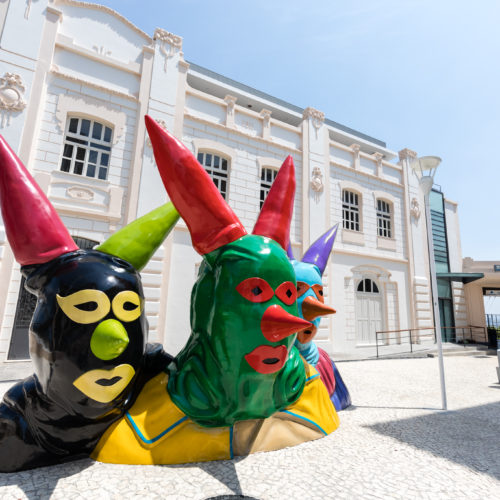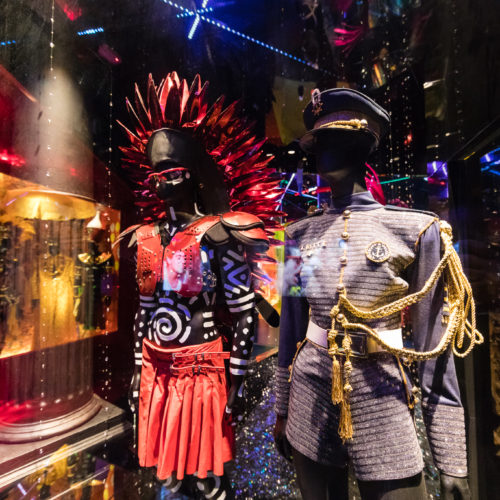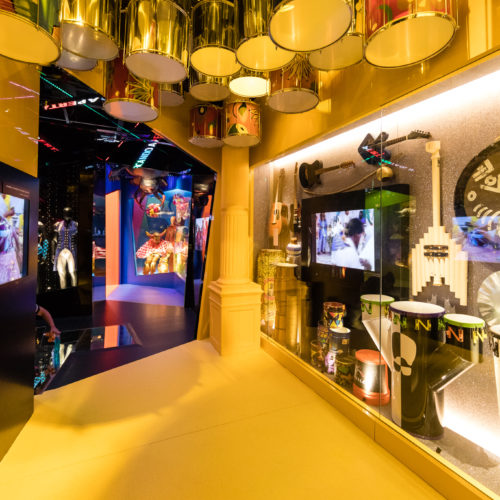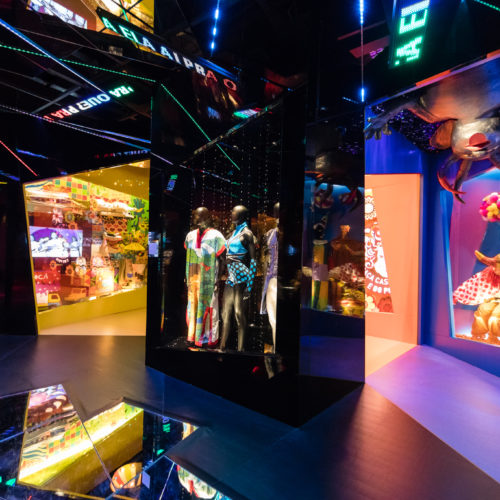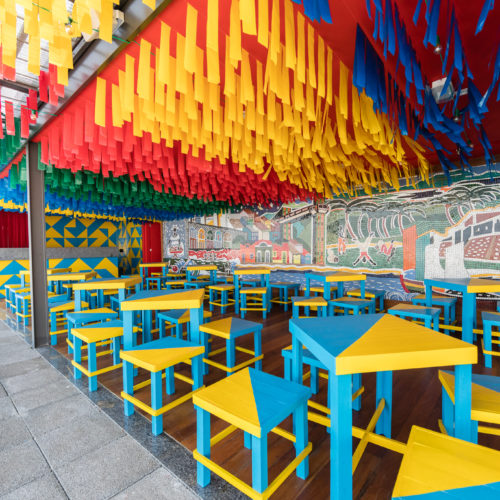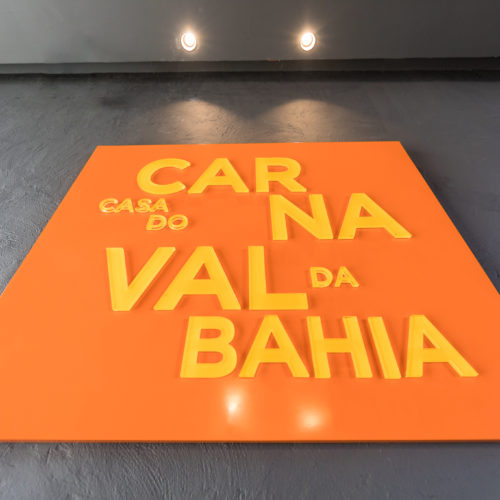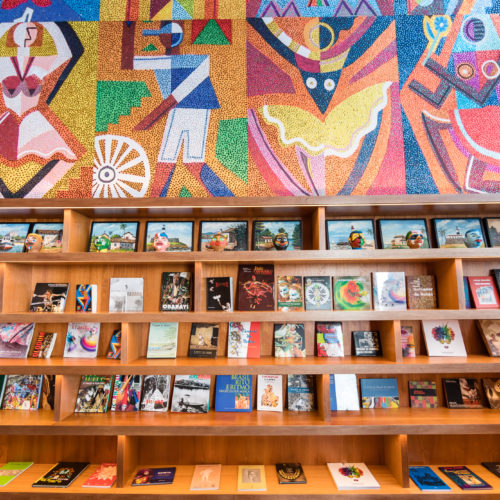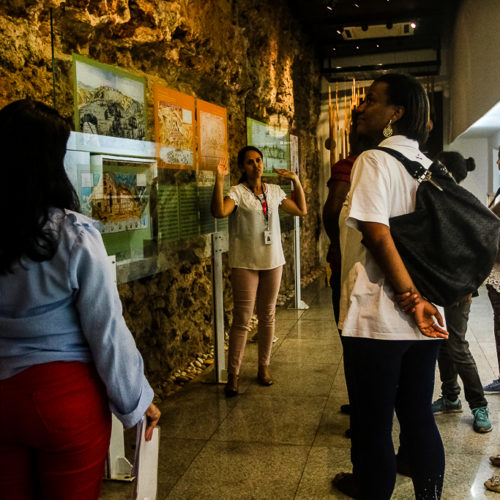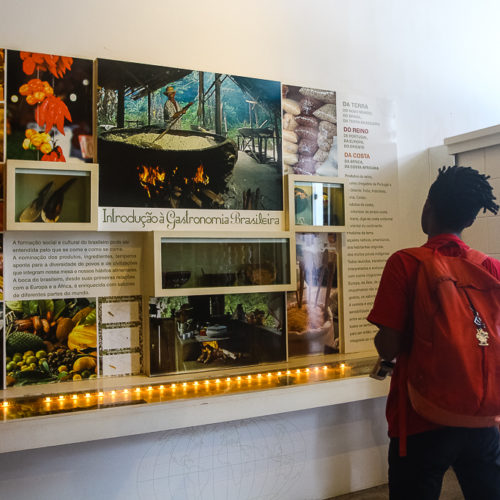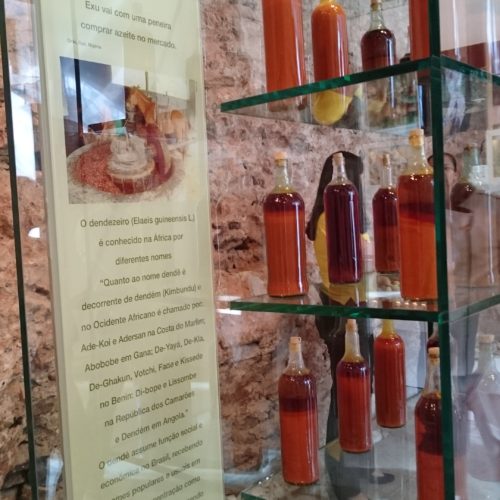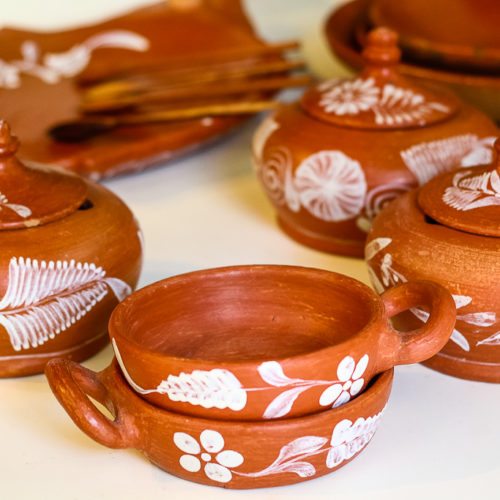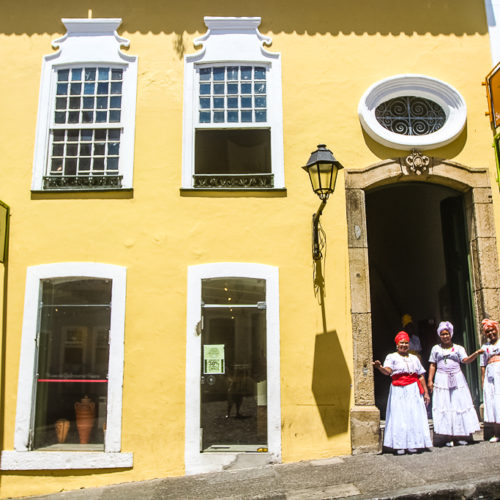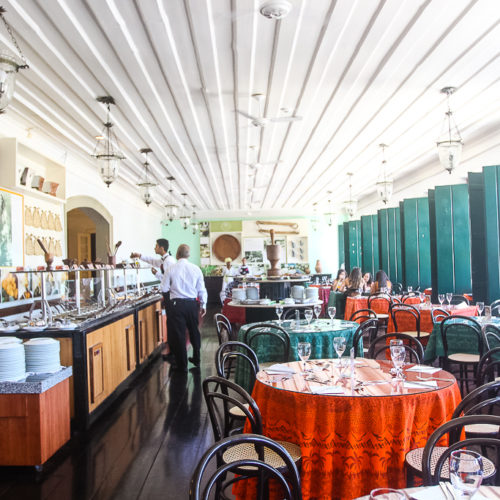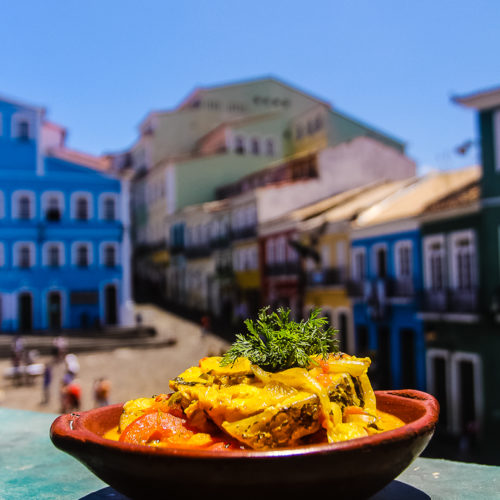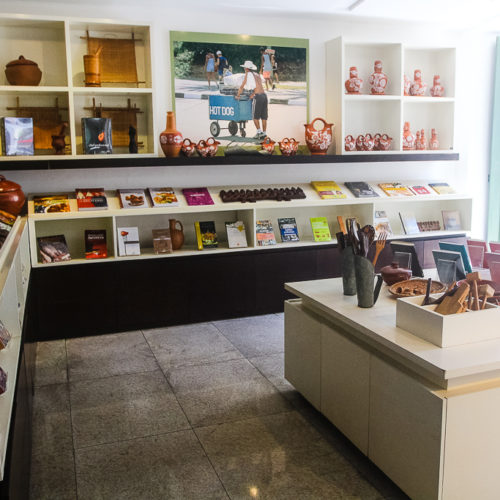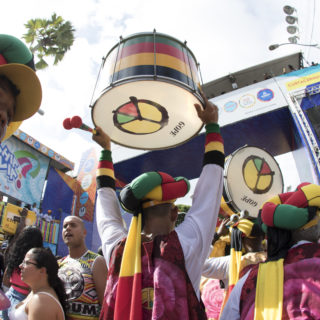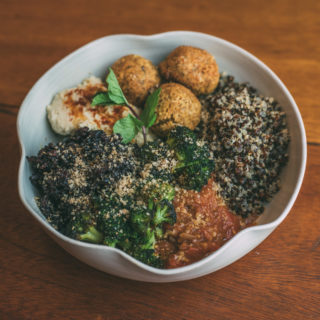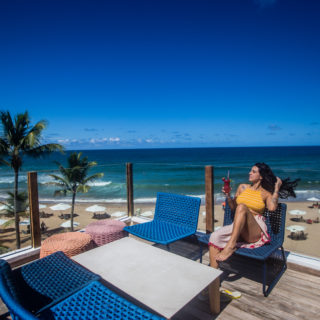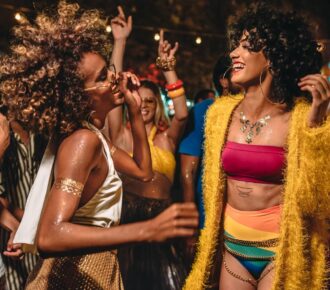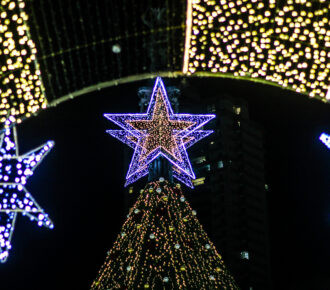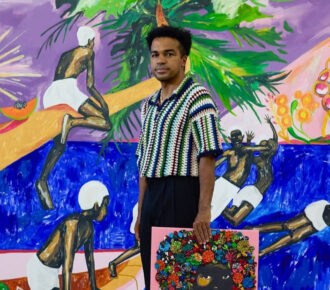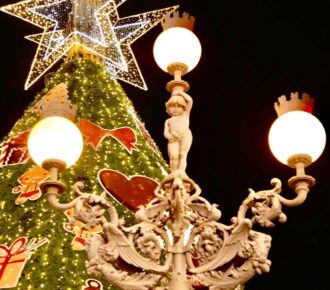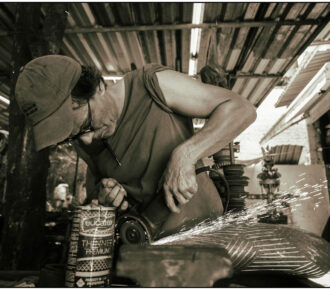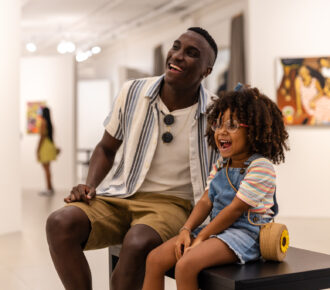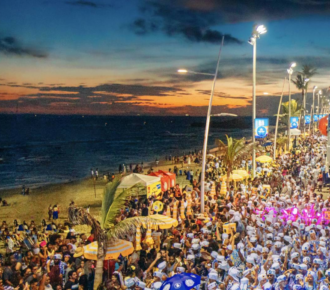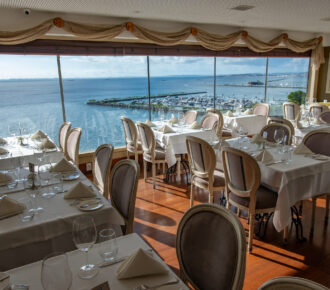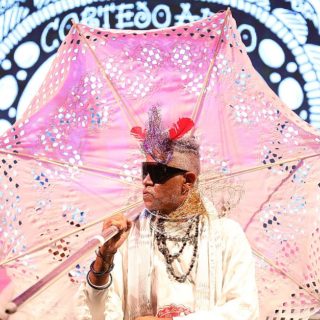
Rich collections, stories told in objects and images, all in Pelourinho
This famous Brazilian colonial baroque architectural set has so many surprises inside its colorful mansions that it would take days and days to visit to get to know everything. Here, we will show you in 10 museums, rich collections, stories told in objects and images, all within our beloved Pelourinho. Come with us to walk through this Historical Heritage, in a kind of “cool” class-tour.
Te preparamos una lista de las músicas perfectas para esta experiencia. ¡Escúchala ahora!
One of the most beautiful museums in Salvador
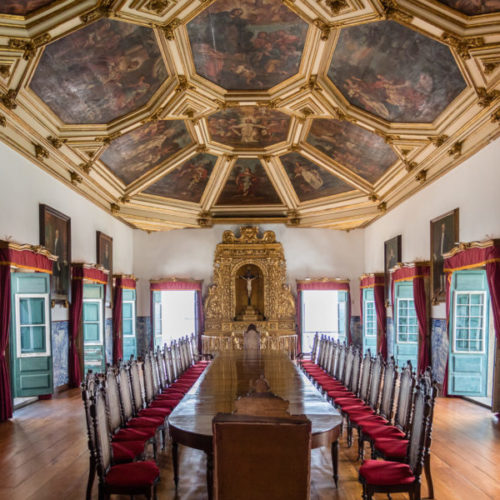
The imposing 17th-century palace, located between the Municipal Square and the Cruz Caída Square, is an important part of Bahia and Brazil’s history. In each of the corridors and salons of the Misericórdia Museum, there is something that recounts health, political and social events in the city of Salvador. The place has already housed the Caridade Hospital, the state’s first health unit, whose story begins in the same year that the Bahian capital was born, in 1549.
The collection, made up of more than 3 thousand pieces cataloged, stands out for the first car powered by gasoline from Bahia and the oldest one on display in Brazil. The state of conservation of the space impresses, the beauty of the pieces, the vast collection and the quality of the guided tour are incredible. The monitors are great, the stories told make each room have a life its own!
Service:
Misericórdia Museum – Address: Rua da Misericórdia, 6, Praça da Sé.
Opening hours: from Monday to Friday, from 8h30am to 5h30pm. Saturdays, from 9 a.m. to 5 p.m. Holidays from 9am to 1pm.
Tickets cost R $ 6 (whole) and R $ 3 (half).
Visits from school groups need to be scheduled.
Phone: 71 2203-9830 / 9832.
Brazilian culture and its Afro-descendants
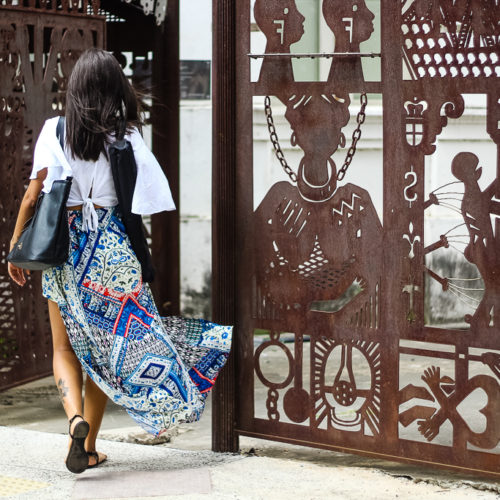
The Afro-Brazilian Culture National Museum (MUNCAB) is a museum with an emphasis on the appreciation about aspects from African culture, highlighting its influence on Brazilian culture. There you have contact with works that speak of the afro identity; afro resistance, quilombos and revolts, as well as learning about contributions in culinary, religious and popular festivals, as well as sports and music, which is an exuberance of samba, semba, maracatu and others.
At the entrance, the rail deserves attention. Inaugurated in 2014, the “Grid Stories of Ogum” was created by the Plastic Artist J. Cunha and manufactured by Jorge Lima Metal Artifacts. The piece represents a historical landmark for Afro-Brazilian culture, a monument that represents the history of its people. The work portrays the main moments and contributions of African slaves and their freed descendants in the construction of Brazilian civilization – the richest cultural diversity on the planet.
Service
Muncab – Afro-Brazilian Culture National Museum
Address: Rua do Tesouro, 61 -127, Centro, Salvador
Phone: (71) 3022-6722
The history of the Baianas of Acarajé
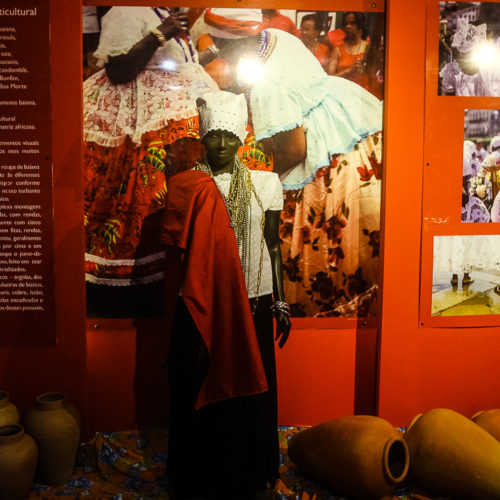
The Memorial of the Baianas of Acarajé is a space dedicated to the history and tradition about the craft from the acarajé baianas. The site, registered by the Culture Ministry National Historical and Artistic Heritage Institute (Iphan / MinC) as Cultural Heritage of Brazil, has exhibition and documentation spaces.
The visitor finds, for example, props, crafts and some gastronomic instruments used by them, a way of safeguarding the trade, with the idea of showing the population and the visitors how and where the acarajé profession started, with photos, objects, clothing and videos.
Service
Baianas of Acarajé Memorial
Address: Cruz Caída, Praça da Sé – Pelourinho, Salvador – BA, 40301-155
Operation: from Monday to Saturday, from 10am to 4pm.
Phone: (71) 3322-9674 Telephone: (71) 3283-5540
Tiles and ceramics from several parts of the globe
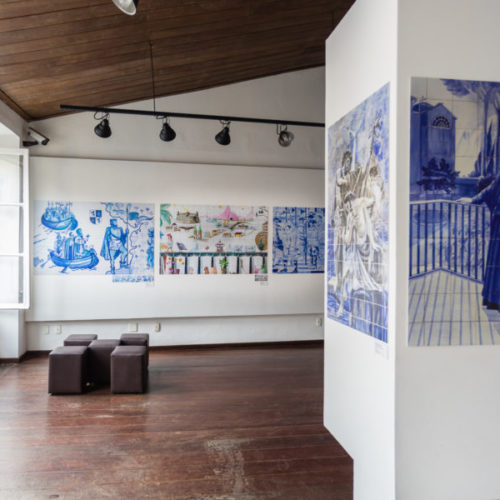
The Udo Knoff Museum of Tiles and Ceramics is the result of the private collection of Udo Knoff, a native of Germany, who lived in the city of Salvador, Bahia, since 1952. It contains pieces by the ceramist, as well as tiles from the 17th and 20th centuries of Portuguese, English, French, Dutch, Mexican and Belgian origin, glazed tiles, plates, jars and reproductions of old tiles. The collection of the museum was collected in its large part from houses in process of demolition in the state of Bahia.
Service:
Udo Knoff Museum
Rua Frei Vicente, 3 – Pelourinho.
Opening hours: from Tuesday to Sunday, from 1pm to 5pm.
Phone: (71) 3117-6389
Pelourinho and its “beautties”!
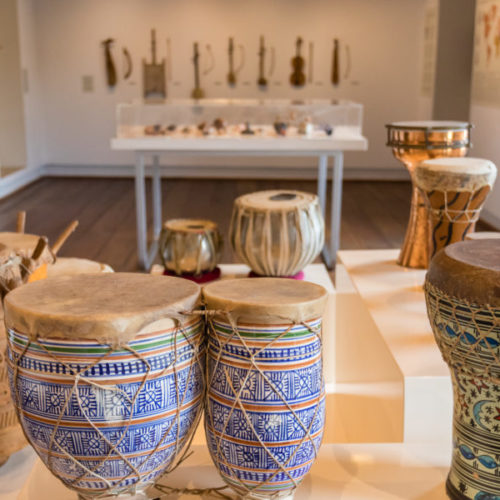
This is one of those hiding places of the Pelourinho that you pass on and cannot imagine the beautiful things that you will find inside. It is not a “Museum”, but a Cultural Center. The Solar Ferrão is a dynamic space of art, culture and memory, installed in one of the most important monuments of the polygonal from Salvador’s Historical Center. It has six floors and houses the Solar Ferrão Gallery, the Abelardo Rodrigues Museum and four collections: African Art, Folk Art, the Walter Smetak Collection and the Collection of Traditional Musical Instruments Emília Biancardi. A fine thing in Bahia, visit it!
Service
Solar Ferrão
Gregório de Mattos Street, 45 – Pelourinho, Salvador-BA.
Opening hours: from Tuesday to Friday, from noon to 6pm. Saturdays, Sundays and holidays, from 12am to 5pm.
Phone: (71) 3116-6743
Postcards, photographs and prints in one of the most complete collections of the country
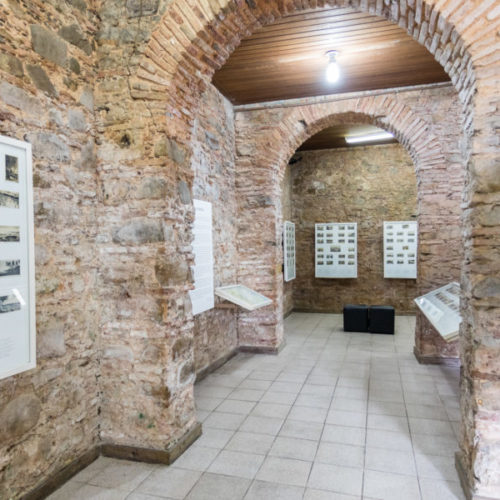
Is there anything more vintage than postcards, my people?! At the Tempostal Museum stand out the representative collections of Bahia Antiga, the Belle Époque postcards, which draw attention to the variety of the materials in which they were made, and the Eucalol Soap prints.
The collection of the Tempostal Museum consists of about 50,000 pieces. They constitute postcards, photographs and prints, from the late nineteenth and mid twentieth century, being one of the most complete collections of the country. They represent images of historical, artistic and documentary value, not only from Bahia and Brazil, but also from various countries of the world, on the most varied themes.
Service:
Tempostal Museum
Gregório de Matos Street, 33 – Pelourinho.
Opening hours: from Tuesday to Friday, from noon to 6pm. Weekends and holidays from 12 a.m. to 5 p.m.
Pierre Verger & Lina Bo Bardi & Africa & Goya Lopes
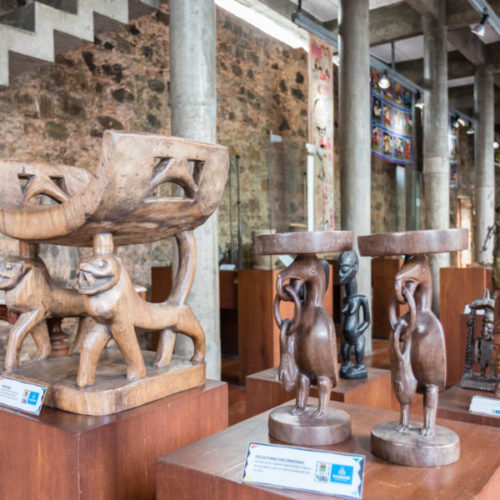
Do you know the Benin House? Go and understand what Pierre Verger, Lina Bo Bardi, Africa and Goya Lopes have in common. Inaugurated in 1988, the space is located in a large house on Padre Agostinho Gomes Street, near Taboão, in Pelourinho.
The House has, among other things, a collection consisting of about 200 pieces originating in the Benin Gulf, collected by the French photographer, ethnologist and anthropologist Pierre Verger during his expeditions to Africa.
The beautiful cloths printed with African motifs, are authored by the artist Goya Lopes. To complete, this is another work with architecture by Lina Bo Bardi, an Italian-Brazilian modernist architect, known for designing the São Paulo Museum of Art (MASP). Beauty to die for.
Service
House of Benin
Baixa dos Sapateiros, 7 – Pelourinho, Salvador-BA, 40025-005
Opening hours: from Monday to Friday, from 9am to 5pm.
Admission costs R $ 4.
Phone: (71) 3202-7890
Ancestry in the vein
The Afro-Brazilian Museum of the Federal University of Bahia is one of the few in the country to deal exclusively with African cultures and their presence in the formation of Brazilian culture. The museum, which was first organized by Pierre Verger, is housed in the building of the first medical school in Brazil, now owned by the Federal University of Bahia.
There are also objects of Brazilian origin, related to Bahia’s Afro-Brazilian religion, including a set of cedar carvings by Carybé, 27 panels representing the Candomblé Orixás from Bahia.
Service
MAFRO – Afro-Brazilian Museum
Largo Terreiro de Jesus, Pelourinho.
Opening hours: from Monday to Friday, from 9am to 5pm.
We are Carnaval! We are folia!
A permanent museum that tells the story of the Bahian revelry. This is the idea of the Carnival House, which on four floors invites the visitor to make a visual and sensorial trip, with several thematic clippings of the party, remembering social transformations and the formation of the Bahian identity.
This revelry museum features mock-ups, clothes and instruments borrowed by party artists, photos and historical documents and two cinemas. Several video projections are also part of the collection (each visitor makes their “trip” around the house in a private way, with the use of headphones). Unmissable!
Service:
Carnival House
Ramos de Queirós Square, s / n – Pelourinho, Salvador – BA, 40026-055
Open from Tuesday to Sunday, from 11am to 7pm.
The visitation will be spontaneous, with a ticket in the amount of R $ 30 (whole) and R $ 15 (half).
Bahia’s flavors
One of the richest cuisines in the world, Bahian food has a Tourist Point status among visitors. The acarajé, abará, coriander, “lambão” sauce, are so famous – and “visited” – as the Senhor do Bonfim Church or Barra Lighthouse. Our tip here is to know the history of it all. The Bahian Gastronomy Museum, an initiative of Senac-Bahia, seeks to value the different food systems of Bahia in historical, cultural, social and gastronomic contexts.
Its mission is to inform, value and spread Bahia’s food in its most varied contexts, focusing on the patrimonial look added to the gastronomic view. In the Museum-School Restaurant the visitor can eat a rich and varied menu of savory and sweet dishes that attest to the cuisines that go from the Recôncavo to the Sertão. To get even cooler, it is in the middle of Pelourinho, making this experience an immersion itself.
Service
Bahia’s Museum of Gastronomy
Location: José de Alencar Square, 13/19 – Largo do Pelourinho, Salvador – BA
Operation: from Monday to Friday, from 9am to 5h30pm. Saturdays, from 9am to 3pm.
Tel .: +55 71 3324.8118
Website: http://www.ba.senac.br/museu
E-mail: museu.gastronomia@ba.senac.br

